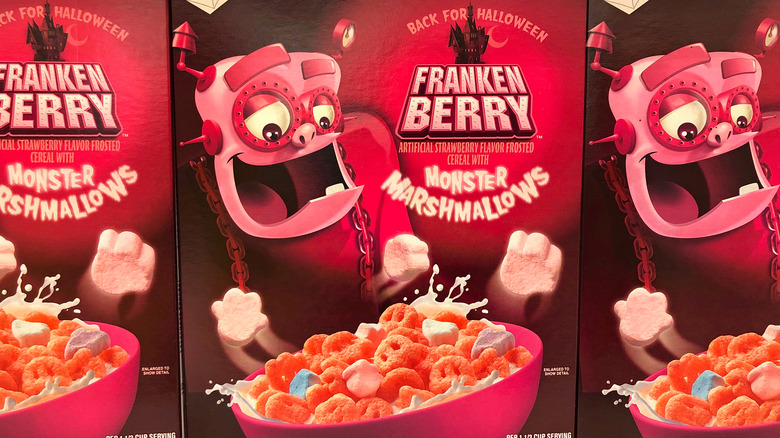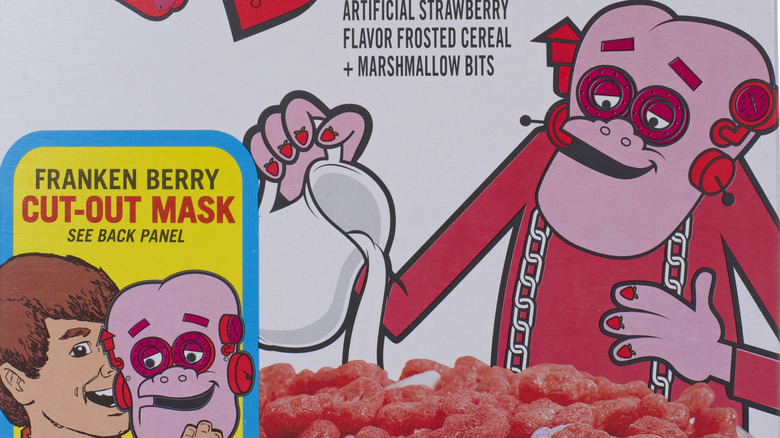The Unsettling Medical Condition Franken Berry Cereal Once Caused
Horror stories about famous food brands appear to be a popular pastime for some. Fairly regularly, some sort of weird news article (bordering on being insane) will proclaim the widespread devastation caused by a caterpillar found in lettuce or a potato chip styled like Kim Kardashian that ate someone's cat.
However, a glance at the history of food manufacturing shows that not all of these scare stories are without merit. Peering with painful eyes into the smoke-infused world of the 1970s, one mishap of food production left a very nasty smell in the air.
Seasonal snack Franken Berry – styled as a fluorescent pink version of Frankenstein's monster with luscious strawberry-themed fingernails that would make any Instagram influencer explode with jealousy – hit the shelves in March 1971 as the sole strawberry-flavored breakfast cereal on the market (via General Mills). But it soon became apparent that its glowing pink candy chunks and marshmallow pieces were causing unintended consequences.
The health issue shows the problems that artificial colors can cause
Achieving Franken Berry's vibrant image involved using a coloring called amaranth, an artificial product (not to be confused with the food amaranth) that cannot be broken down or absorbed by the body. Consequently, it was found that Franken Berry was giving people bright pink feces – thoughtfully named the Franken Berry Stool (via Smithsonian Magazine).
The drama came to light after one child was rushed to an emergency department. Seeing the pink poop, the child's mother understandably became extremely worried, believing it to be a symptom of internal bleeding (via Mental Floss). It was thankfully concluded that the discolored excrement was harmless, but part of the suspect coloring – Red Dye No. 2 – was later banned for possibly being linked to causing cancer.
Fortunately for worried parents, Atlas Obscura notes that Franken Berry's coloring was switched to a less noticeable alternative after the scandal broke. But it's been alleged that a product related to Franken Berry – the blue-themed Boo Berry – continued using a synthetic blue coloring that recoats human waste in an illuminating shade of green.

